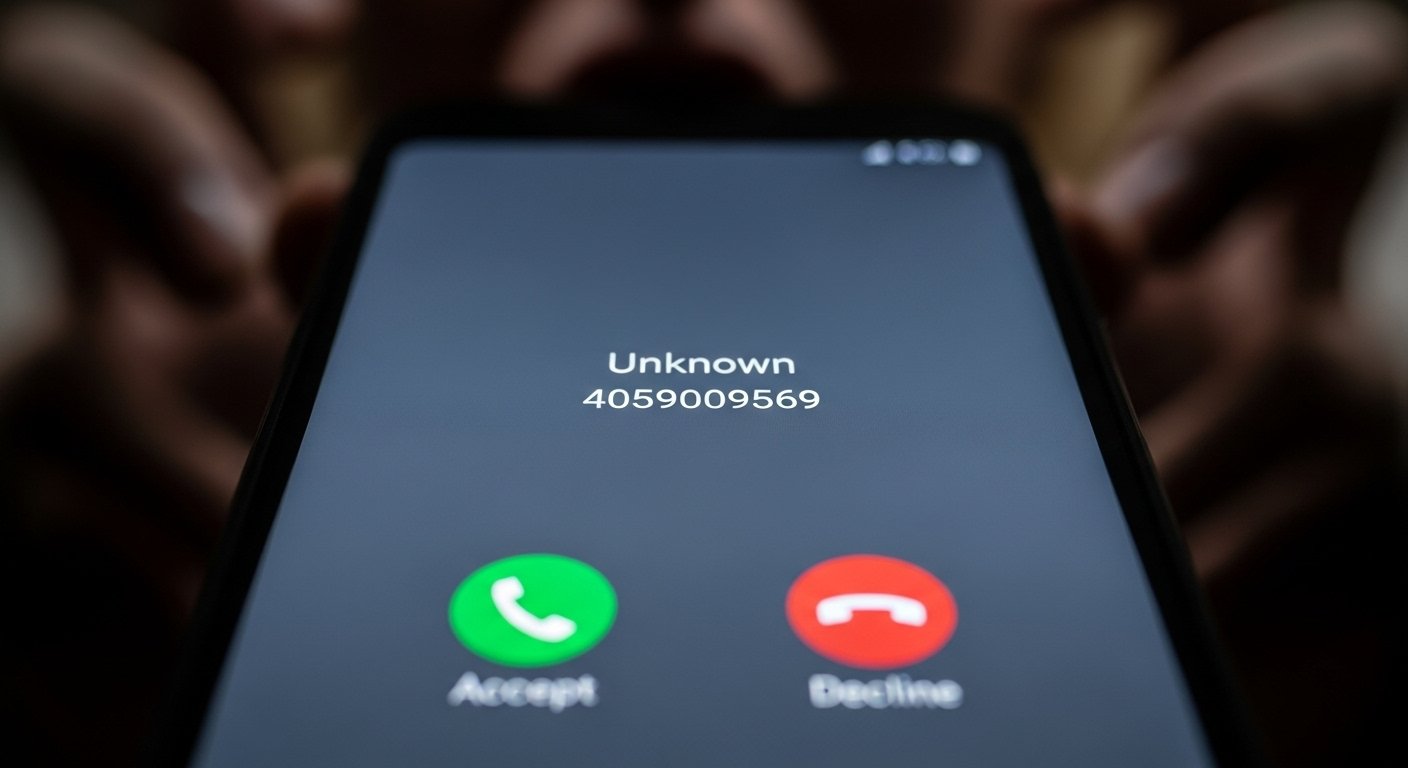You’re going about your day when your phone buzzes or you glance at a document, and there it is: 4059009569. A string of ten digits that seems to carry no immediate meaning. It looks like a phone number, but whose? Is it a random sequence, a code, or something more? In our data-saturated world, encountering such numerical mysteries is increasingly common. They pop up in call logs, on spreadsheets, or in the fine print of documents, leaving us with a sense of curiosity and sometimes unease.
This article is your guide to unraveling the mystery of 4059009569. We will explore the most probable explanations for this number, delve into the world of area codes and number assignments, and equip you with the knowledge to understand what such a sequence might represent. More importantly, we will discuss how to navigate these digital unknowns safely and smartly. Let’s begin our deep dive into this numerical puzzle.
What Exactly is 4059009569? Breaking Down the Possibilities
At first glance, 4059009569 is a ten-digit number. In the United States, Canada, and other countries participating in the North American Numbering Plan (NANP), this is the standard format for a telephone number. It’s structured as a three-digit Numbering Plan Area (NPA) code, often called an area code, followed by a three-digit central office code, and finally a four-digit line number (NXX-XXXX).
However, not every ten-digit sequence is an active phone line. It could be a placeholder, a sample, a serial number, or simply a random generation. To understand 4059009569, we need to dissect it piece by piece, starting with its most identifiable component.
The 405 Area Code: An Oklahoma Origin Story
The first three digits, “405,” are the key to geographically locating a traditional phone number. The 405 area code is a real and active area code assigned to a significant portion of the state of Oklahoma in the United States.
Originally, it covered the entire state when it was established in 1947. Over the years, as population growth demanded more phone numbers, it has been split and overlaid. Today, the 405 area code primarily serves Oklahoma City and its surrounding metropolitan areas, including communities like Edmond, Norman, and Moore. So, if 4059009569 is a phone number, it is almost certainly associated with this region of central Oklahoma.
This geographical clue is our first solid lead. It tells us that any entity behind this number is likely based in or operating out of central Oklahoma.
Analyzing the Prefix: 900
The next three digits in a phone number are the central office or exchange code, often called the prefix. In our case, this is “900.” This is where things get interesting. The 900 prefix is not a typical, random assignment.
Historically, numbers with a “900” prefix are often associated with premium-rate services. You might remember the era of 1-900 numbers for horoscopes, chat lines, and other services that charged callers by the minute. While less common today, the association persists.
Furthermore, within the structure of legitimate phone numbers, the “900” prefix is less frequently encountered than others, making it stand out. In the context of 4059009569, this prefix could indicate a few things. It might be a number for a specialized business service, a legacy line, or, in a more modern and concerning context, it could be a number generated for spam or scamming purposes, chosen specifically because it is memorable and unusual.
The Modern Digital Landscape: Why You Might See a Number Like 4059009569
We don’t encounter numbers in a vacuum. The context in which you see 4059009569 is critical to understanding its purpose. Let’s explore the most common scenarios.
The Unknown Caller Phenomenon
This is the most frequent way people encounter mysterious numbers. Your phone rings, and the caller ID displays “4059009569.” You don’t recognize it. Do you answer?
In today’s world, a vast majority of such calls are not from a person trying to personally reach you. They are automated. Robocalls and spam calls are a massive industry. Scammers use technology to “spoof” caller IDs, making it appear as if a call is coming from a legitimate-looking number, often within your own country, to increase the chance of you answering. The number 4059009569 could easily be a spoofed number, used once and then discarded.
Data Entries and Placeholders
Outside of the calling context, 4059009569 might appear in a database, a spreadsheet, or a software application. In these cases, it’s often used as a placeholder or sample data. Software developers and testers frequently use sequential or patterned numbers like this one to populate fields during the development phase. It’s a dummy value, not meant to represent a real entity.
You might also see it as a part of a serial number for a product, an account number in a non-telecom system, or a tracking identifier. In these instances, the number is simply a unique identifier and holds no connection to the Oklahoma area code.
The Possibility of a Coincidence
It is also entirely possible that the sequence 4059009569 is just that—a sequence. It could be a part of a mathematical set, a code in a game, or a randomly generated string for a password. Our brains are wired to find patterns and meaning, especially in numbers that fit a familiar format like a phone number. Sometimes, the mystery is a creation of our own perception.
How to Respond and Stay Safe
Encountering an unknown number like 4059009569 requires a cautious approach. Your security and privacy should always come first.
If You Receive a Call from This Number
If your phone rings and displays 4059009569, here are the best practices to follow:
-
Do Not Answer Immediately. Let the call go to voicemail. Legitimate callers will often leave a message. Robocalls and scammers typically will not, or they will leave a generic, suspicious message.
-
Do Not Call Back Right Away. If the number is spoofed, you could be calling back an innocent person who had their number cloned, or you might connect to a premium-rate line.
-
Perform a Quick Search. Use a search engine to look up the number. You can type “4059009569” directly into the search bar. Often, you will find results from crowd-sourced call identification websites where other users report their experiences with the number. Look for a pattern. If many people report it as a spam or scam call, you know to avoid it.
-
Use Call-Blocking Technology. Most smartphones have built-in features to silence unknown callers or send them directly to voicemail. There are also many reputable call-blocking apps that maintain extensive databases of known spam numbers.
Protecting Your Personal Information
Never, under any circumstances, give out personal information, financial details, or passwords to an unsolicited caller, even if the caller ID looks familiar or local. Scammers are experts at social engineering, creating a false sense of urgency or authority to trick you into complying.
If a caller claiming to be from your bank, the government, or a tech support company asks for sensitive data, hang up. Then, call back using the official phone number listed on the organization’s legitimate website or your account statement.
Beyond the Number: The Bigger Picture of Digital Identity
The mystery of 4059009569 is a small but perfect example of a larger issue in our interconnected world: the erosion of trust in digital identifiers. Phone numbers, which were once a stable and reliable way to reach a person or business, can now be easily faked and weaponized for fraud.
This phenomenon pushes us towards more secure forms of communication and verification. Two-factor authentication, encrypted messaging apps, and digital certificates are becoming the new standard for establishing trust. The humble phone call is no longer a secure channel by default.
Understanding this shift is crucial. A number like 4059009569 serves as a reminder to be vigilant, to question unsolicited contact, and to prioritize security over convenience.
Conclusion: Solving the Puzzle of 4059009569
So, what is 4059009569? Our investigation points to a few likely conclusions. It is, structurally, a number fitting the North American phone system format, with an area code placing it in central Oklahoma. Its distinctive “900” prefix makes it memorable but also potentially suspicious in a telemarketing or scam context.
The most probable scenarios are that it is either a spoofed number used in a robocall campaign, a placeholder in a data system, or simply a random numerical string that we’ve assigned meaning to. The chances of it being a personal landline or a business number waiting for your call are exceedingly slim.
The real takeaway from our deep dive is not just the identity of this one number, but the framework for understanding any unknown number you encounter. By checking the area code, researching the prefix, searching for user reports, and always adhering to safety protocols, you can demystify these digital enigmas and navigate the modern communication landscape with confidence and security.
Frequently Asked Questions (FAQs)
1. Is 4059009569 a legitimate phone number?
It is impossible to say for certain without official verification. While it follows the correct format for a US phone number in the 405 area code (Oklahoma), it could be inactive, unassigned, spoofed by scammers, or used as placeholder data. There is no public directory that confirms its active status.
2. What should I do if I keep getting calls from 4059009569?
The best course of action is not to answer. Each time you answer, you signal to the spam system that your number is active. Use your phone’s built-in feature to block the number. You can also report the number to the Federal Trade Commission (FTC) via their website to help build a case against illegal robocallers.
3. Could 4059009569 be an international number?
The format suggests it is a number within the North American Numbering Plan (NANP), which includes the US, Canada, and various other territories. The “1” country code is implied. It is not formatted as a typical international number from outside the NANP, which would begin with a “+” and a country code.
4. What does the 900 prefix in a phone number mean?
Historically, a 900 prefix was used for premium-rate services where the caller was charged a fee per minute. While this practice is less common now, the association remains. In modern number assignments, it can simply be a less common exchange code, but its history makes numbers with this prefix often viewed with suspicion when from an unknown caller.

